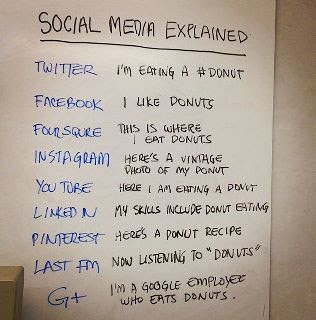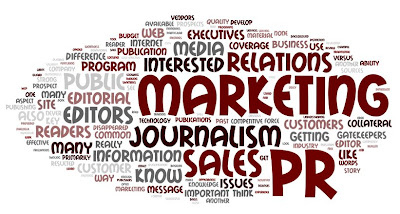In the first blog of the class, Tom discussed media ethics in the form of gossip in the media. More specifically, Tom talked about celebrity gossip on sites like TMZ.com to which he referred to as the “lower end of news.”
He began with saying that “People shouldn’t dig up any irrelevant detail about [celebrities’] private life and plaster it all over the Internet.” I must disagree with Tom here. While I do agree that it seems rather silly about what is classified as news, I think celebrity is gossip is just a topic that comes with the territory.
Tom goes on to say “that kind of information sells.” Yes Tom, it does. It is the defining factor on why “Who is Kim Kardashian dating now?” is seen on all news outlets. In 24/7 news cycles many networks pick up any story that will get viewers to watch. These “unsubstantiated claims” that Tom disagrees with are what drive many television, newspapers, and gossip blogs like BlindGossip.com to make money. It is always important to remember that in the end – it comes down to money.
There is one quote from Tom’s blog that really stuck with me – “I initially thought that I had a strong ethical foundation, but it appears that it is more of a moral foundation.” I believe that Tom touches on an idea that many individuals in the class agree with. I think a lot of us would believe that we would make the right decision when faced with an ethical dilemma, but I think a lot of young media professionals, like Tom and myself, have much more to learn.
In the second blog post Kelly dives into the topic of secrets and the unfortunate fact that many media professionals are faced with them everyday. She claims that while we do hear secretive information on a daily basis, “It’s only when something conflicts with our ethics or morals that we take notice.”
She goes on to describe that when she hears information from a colleague that she deems as important she feels an obligation to share it with her boss. My question is: how does she deem something important?
To help explain her thought process she uses the ethical decision-making model from Sissela Bok:
1. How do you feel about the actions?
2. Is there another professionally acceptable way to achieve the same goal that will not raise ethical issue?
3. How will others respond to the proposed act?
Kelly even went farther and added another question to the model – 3b. What will be the consequences of my actions?
It was very interesting to see Kelly break down her ethical process step by step. She describes all the stakeholders in the situation and why she would make certain decisions. One point that stuck out to me was when she explained why she would not go to the press with her problem. She defends her point with the thought that since she works for a non-profit organization, any news of wrongdoing could ultimately hurt the organization more than help it. She gives an example of if a superior or colleague was using the fund from the organization for personal gain. She states, “donors and public are likely to lose faith in the organization and funds would decline. This would ultimately have an impact on the constituents who receive support from the non-profit.”
However, on the other side of the equation I can’t help but argue that one should report such activity to the public. Isn’t it their right to know? One example would be the recent developments with the Susan G. Komen non-profit organization. When people donate to this organization they believe they are donating to help find a cure for breast cancer. However, in recent developments it was revealed that money from the foundation was actually also being giving to Planned Parenthood that supports abortion. Many people were upset at this information and since then officials have resigned. So would it have been better to handle this internally like Kelly would choose to do? I’m not so sure.
In the third blog Avery Owens discusses product placement and how prevalent it is in today’s society. More importantly he also discusses the ethical decisions graphic designers, like himself, are faced with everyday.
I found it interesting when Avery stated, “Upon further investigation of Graphic Design ethics, I stumbled upon the realization that there is no solid code for ALL Graphic Designers in America.” This shocked me. How could this be? How could there be no code of ethics for a profession that is constantly changing and modifying images in advertisements, magazines, etc. that people see hundreds of times a day. More specifically with programs like Photoshop, which also images to be altered, how are their no guidelines to what can and can’t be modified. However, at the same time it did make sense with the amount of controversial images in history that have been altered.
Avery also discusses an example of a BBC program that was removed due to Apple advertising. It was removed because it was believed that there was an exchange of cash and favors. I agreed with Avery that every day you see movies and television with some type of Apple products in them. Apple (iPhones iPods, etc.) has infiltrated popular culture in a way that it is now unavoidable.
Avery goes on to make the point that Graphic Designers are there to create logos, images, animations, etc. to help brands/corporations with advertising and marketing strategy. I found this to state that graphic designers are messengers. They are the individuals that take an idea from a company and make it into a symbol for the public to see and interpret. This being said, I think there needs to be some accountability for these individuals as they create quite an impact on the general public and their perception of corporations and brands. Will changes ever be made?
In the fourth blog post Conrad discusses the current world of Public Relations and it’s problems with a current definition of P.R. He discusses codes of ethics like the Hays Code for movies as well as traditional models of communicating information like the top to down model.
I agree with Conrad that the P.R. world is constantly changing and the current definition is very outdated having been created in 1982. With the growth of technology and more importantly the use of the Internet and social media – P.R. is nothing like it was 20-30 years ago.
Conrad states “the public believes public relations practitioners take the side of the brand rather then the consumer.” I believe that what the public believes is true. While I agree that P.R. helps delivers messages to the public from corporations, I think that P.R. has a loyalty with the company and is not exactly as two-sided as Conrad claims.
Conrad goes on to create a definition of “Public Relations is a bi-partisan mediator between organizations and its publics who have mutual interests.” I completely disagree with this statement. I do not believe that the public, corporations, or public relations have mutual interests at all. The corporation wants to sell a product and make money. The P.R. Company wants to help the corporations sell products and make money from the corporation. The public wants to be told the truth about a product and if they like the product, they want to buy it. I do not think there is any understanding/mutual agreement among these threes parties at all.
Conrad then states, “The digital age has limited society’s privacy because Internet users are leaving digital footprints.” I think this is completely true. I think that while social media has allowed more control on the part of the consumer to voice their opinions, through using social media they have allowed corporations to have more of a control over the information they are supplied with. Many social media sites like Facebook are making money off of users by data mining their information and selling it to corporations to find out more about then. Is anything truly private on the Internet?
On the 5th week of blogging the class discussed a very serious problem that the Internet has encouraged which is cyber bullying. The Internet has operated as a gateway to this issue and in this blog Zach Frank discussed a specific case.
Zach talks about the case of 13 year-old Megan Meier decided to take her own life after her neighbors (a classmate, a mother, and an 18 year-old coworker) cyber bullied her on the social network MySpace. He starts off expressing “This has got to be where the line is drawn,” and I couldn’t agree more. In the early teenage years, children are so vulnerable what others say about them. It used to be that kids would get bullied and then would escape it when they got home from school. Now with the use of the Internet, the bullying follows them all the time. When will it stop?
Zach then discussed an article about the incident and whether or not the names of the cyber bullies should be released to the public. At first he says, “They changed the focus of the attention with cyber bullying from the attacking and seeking revenge on the neighbors to sympathy for the loss of life.” I hate to disagree with this statement. I think by sharing the names with the public they aren’t changed the attention, but rather drawing attention to the issue. After the article was published, people went on a search for the names anyway, so why not just share with them to begin with?
I agree that the cyber bullying is “disgusting for another 13 year-old to do, let alone two supposed adults.” Zach makes a great point that the adults involved in this incident should be acting like role models instead of the exact opposite. Therefore shouldn’t they be viewed in the light of who they truly are? Perhaps they didn’t commit a crime, but shouldn’t the public be aware of these people in their community?
Zach goes on to agree with me in saying “the community has the right to know the names of the individuals that intentionally victimized a child.” However does since they did not break a law, should they lose their rights to privacy? By releasing the names of the public the newspaper is allowing for the court of public opinion to judge these individuals – is that fair?
Zach takes his discussion a step further and says that social media networks should be held accountable for cyber bullying and should also be watching for signs of it on their services. Similar to what I said in my blog, I do not agree with policing everyone on social media. Millions of people use social media everyday, so is it not possible to watch every step users make online. I think that these networks try to help with “report abuse/spam” buttons on their sites, but I think their needs to be more education about the uses of social media as well as laws to help solve the problem. If you have social media networks police their users, isn’t it starting to take away from users privacy and freedom of speech?












